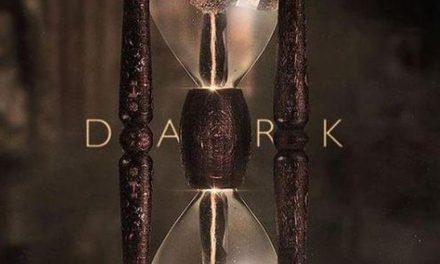We may watch children’s television at two key, if relatively long, periods in our lives. Firstly, when we arechildren, and second if and when we have children. I am currently experiencing the latter period, with my two year old daughter Tabitha now a keen viewer of particular programmes on CBeebies, principally Something Special, Baby Jake, Same Smile and Show Me Show Me. Becoming a ‘second phase’ viewer of children’s television, whilst also teaching and researching television, raised some interesting questions about how I navigate my identity as a viewer, a scholar, a lecturer and a Mum.
For example, viewing children’s television immediately impacted upon my teaching, as I decided to include a week on this topic in my second year module ‘Television Genre’. I had never seriously considered this before, not because I didn’t think it was important, but because I saw contemporary children’s television as a ‘foreign land’, and something that was ‘not for me’ when it came to teaching and research: where would I begin, or how would I enter, the busy terrain of children’s TV? This may also have been strengthened by my sense that, in terms of academic scholarship, children’s television was comparatively neglected compared to other television genres. To be sure, important work exists, but my sense was that this often focused on institutional issues or the child viewer, with rather less focus on questions of aesthetics, address and representation (which would have best fitted with my module). In fact, with regard to the latter, some of the most interesting and contemporary comment that I found occurred in the press. As Daily Mail journalist Laura Kemp observed of pre-school programming on CBeebies:
The message is clear: nursery is normal, fun and nothing to be scared of. But as a stay-at-home mum, I feel undermined, undervalued and angry.
Not a single programme in the channel’s repertoire is set at home with a mother -which is surely the most natural scenario in the world.
On CBeebies, there are black, Asian and disabled presenters, ethnic dishes in It’sTime For Lunch, world music on Space Pirates, yoga and meditation on Waybuloo the Tikkabilla show which is named after an Indian form of hopscotch and children with learning difficulties star in Something Special.
I’m delighted every colour of the rainbow is represented …
But why am I left out – the woman who chooses to care for her own child? In its paranoid desperation to embrace every minority group, the BBC has overlooked the traditional family” (Kemp, 2009).
Writing in 2009, Kemp argued that ‘Old Auntie’ had become hostage to Labour’s ‘send-Mums-back-to-work’ mantra, although I think there are much broader affective, narrative or cultural reasons why children’s television often focuses on alternative groupings which foreground teamwork and friendship. Either way, putting to one side the highly problematic suggestion that the stay-at-home-Mum is the most ‘natural’ representation of motherhood (or that diversity and equality is simply achieved by virtue of a representational presence), reading such material made me reflect more closely on the representations that Tabitha was consuming. As a single mother to a donor-conceived child (something which, I think it is fair to say, is unlikely to be represented on Cbeebies any time soon!), I may have particular reason to scrutinise the ideological norms that are purveyed. I realised however that, with regard to the texts that Tabitha consumes today, Kemp’s comments remained very apt. The only programme in our list to include any real sense of a heterosexual family was Baby Jake, as Jake’s family appear in live action sequences at the start and finish of his animated adventure, which is narrated by his brother Isaac. (That said, it is worth noting that even this family is far from ‘traditional’, and would be something of a psychologist’s dream: the mother and father live in a windmill with their 8 children, one of whom only eats peas, whilst another ‘thinks she’s a tree’).
This raises the issue of how to navigate questions of social impact and influence as a second phase viewer of children’s television, a Mum, as well as a television lecturer. Coming from within Television Studies, I had long since been sceptical of the pervasive ‘effects’ discourses which surrounded children’s television, understanding this to be a discredited (and indeed ‘old-fashioned’) approach to audiences based on little or no compelling evidence. I also discouraged students who seemed to want to pursue this perspective on my module, explaining that we were more interested in questions of cultural representation or aesthetics. And yet, whilst I don’t worry that television will somehow ‘make’ Tabitha violent (even the most alternative reading of Something Special, Baby Jake, Same Smile or Show Me Show Me would find it hard to make a case for this possibility), I do worry about questions of ideological representation, and equally find myself wondering if she should be doing something ‘more productive’, rather than flopping down in front of the television. In other words, I found it difficult to avoid internalising these ‘common sense’ ideas about television, even though I had always defended the social value and importance of the medium in popular, research and teaching contexts.
Equally, teaching children’s television as a second phase viewer afforded me the highly curious and sometimes uncomfortable experience of watching pre-school television in the classroom. Given that many of us no doubt teach television that we also watch and enjoy, there has long since been the need to navigate the experience of viewing it in the often very different context of teaching. Of course, a considerable amount of academic scholarship has explored the notion of having a substantial amount of investment in, and knowledge about, the media text being studied: the concept of the ‘aca-fan’ (Jenkins, 2013). But this concept does not fit what was at stake in my experience here. I am hugely familiar with the activities of Mr Tumble in Something Special, and indeed regularly find myself ‘hearing’ key lines (‘Lift your finger, touch your nose, blink three times, and off it goes!’) or musical refrains in my head as I go about my day. Lines, characters or episodes also become a source of shared humour in my relationships with my friends who have children of a similar age. Yet I am not a ‘fan’ of the show in a traditional sense. (Indeed, far from it: its ever-present and heavily repeated nature can border on being infuriating). But watching programmes from CBeebies on my module highlighted how personal familiarity with a text can feel just that: personal. Viewing texts which are such a central part of mine and Tabitha’s domestic landscape in the darkened space of the seminar room felt almost embarrassing, as if I was showing the students ‘our’ domesticity and our ‘private’ time that would normally be hidden from view. This was especially so given that Baby Jake in particular received hoots of laughter and exclamations that it was ‘freaky and weird’ (the series is animated, but features the baby Jake’s ‘real’ face), whilst I was trying to ensure that I wasn’t singing the highly catchy theme tune.

But this suggestion of secluded domestic viewing also misrepresents how Tabitha actually consumes ‘television’, and it is perhaps more interesting that I privilege this mode of viewing television in terms of how I picture our relationship and domestic context. The idea that children are ‘digital natives’ has long since gained a popular and academic currency. But I have nevertheless found it both fascinating and thought-provoking to witness the development of this identity or subjectivity first-hand. Much has been made of the ‘dispersed screens’ (Marshall, 2009) of contemporary television and media culture. At the time of writing, Something Special is Tabitha’s favoured show by a mile, and it may be that Tabitha sees our television – episodes on Sky+ or DVDs – as the primary location through which to encounter Mr Tumble and his friends, as this is where the programme is most regularly consumed (although I of course have no idea whether this is actually the case). At the same time, Mr Tumble is essentially someone to be asked for every time she sees a screen (‘More more Tumble’), whether this refers to our domestic television, the portable DVD player in the car, the mobile phone, the laptop or the tablet.

But dispersed, and endlessly repeated, fragments of television are also central to Tabitha’s viewing, partly due to an often limited attention span, but also the contexts in which material is consumed, from YouTube clips to the first third of an episode watched on the portable DVD player on a short car journey. Repeatability often seems central to the pleasures of children’s television, both within episodes (i.e. the same structures or phrases are used), or in terms of re-viewing material. But the dispersed accessibility of contemporary television culture clearly accentuates this pleasure. At the same time, the technology itself, or at least the technological framework in which the material is embedded, seems to remain important to her. Even when Mr Tumble can readily be accessed on television she requests the DVD (so that the open and play buttons can be pressed), and even when the DVD is playing she will seek Mr Tumble on the tablet so that she can choose (‘Dis one! No dis one!’), which clip to watch from the list of clips on YouTube.
So whilst it is often remarked – with extremely good reason – that having a child impacts upon the time available for new research and the planning of new teaching, my own experience in this regard has also suggested the opening of new doors. It would be interesting to hear how others have negotiated this shift given that, as all of the programmes that Tabitha watches make clear, ‘it’s good to share’.
Su Holmes is Reader in Television at the University of East Anglia. She is the author of British TV and Film Culture in the 1950s (Intellect, 2005), Entertaining TV: The BBC and Popular Programme Culture in the 1950s (MUP, 2008) and The Quiz Show (EUP, 2008). She is also the co-editor of Understanding Reality TV (Routledge, 2004), Framing Celebrity (Routledge, 2006), Stardom and Celebrity: A Reader (Sage, 2007), and In the Limelight and Under the Microscope: Forms and Functions of Female Celebrity (Continuum, 2011).




